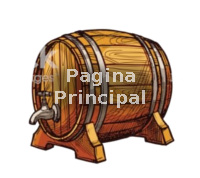Por Jane Peyton
Catorce de las 20 cerveceras más grandes del planeta usan malta británica. La cebada crece en todos los continentes aparte de la Antártida, entonces ¿por qué esos cerveceros no usan cereales que se han cultivado y malteado más cerca de casa? Porque gracias a los suelos, el clima y las técnicas de malteado innovadoras de Gran Bretaña, la malta británica es reconocida como la mejor malta cervecera y de destilación en el mundo.
He estado conversando con Susanna Forbes, amante de la cerveza, experta en bebidas, fundadora del sitio web Drink Britain, y corresponsal de cerveza y sidra para la revista Imbibe sobre la malta de bajo perfil que ha tenido recientemente en la charla general. Decidimos hacer lo que pudimos para aumentar la atención y ahora estamos en una misión.
El primer elemento en nuestra campaña fue preparar una cerveza en la que la malta era el sabor dominante. En nuestra opinión, solo había una persona con quien elaborar: Sara Barton, fundadora de Brewster's Brewing Company y British Brewer of the Year 2012-13. Sara elabora cervezas bellamente equilibradas donde tanto las maltas como el lúpulo aportan sus mejores características a la fiesta. Los tres estamos dedicados al lúpulo, pero también saboreamos las cervezas malteadas, así que juntos elaboramos la receta de nuestros sueños.
 El día de la cerveza, Sara reveló la receta final: una deliciosa mezcla de siete maltas diferentes: lager, cristal, cristal oscuro, carafa, centeno, avena y trigo, todos generosamente donados por Crisp Malting Group. English First Gold y Fuggles, y una pizca de American Citra se aseguraron de que los lúpulos no abrumaran a la malta.
El día de la cerveza, Sara reveló la receta final: una deliciosa mezcla de siete maltas diferentes: lager, cristal, cristal oscuro, carafa, centeno, avena y trigo, todos generosamente donados por Crisp Malting Group. English First Gold y Fuggles, y una pizca de American Citra se aseguraron de que los lúpulos no abrumaran a la malta.Nuestra oblación para Ninkasi se llama Siete Cielo. Estará disponible en pubs seleccionados de todo el país y tendremos un lanzamiento en Londres el 2 de diciembre de 2014 en el pub Craft Beer Co, 82 Leather Lane, EC1N 7TR. Estaremos allí desde las 7 p.m.. Con un 4,8% de ABV Seven Heaven es una cerveza oscura altamente bebible compuesta de complejos sabores afrutados con notas tostadas iniciales, una ligera crocante del centeno, y un dulce.
Hay una gran cantidad de hechos fascinantes sobre la malta, así que aquí hay una selección amablemente provista por el Dr. David Griggs, bioquímico de plantas y director de proyectos de Crisp Malting Group.
- La evidencia arqueológica muestra que el grano germinado se ha utilizado en bebidas alcohólicas durante más de 7.000 años; las primeras pruebas incluyen arroz en China y trigo en Mesopotamia (Irán actual)
- Hay alrededor de 25,000 granos en cada 1 kg de malta
- La capacidad mundial de maltería es de 23 millones de toneladas; suficiente para elaborar casi 270 mil millones de pintas por año
- Se necesitan casi 2,000 granos de cebada malteada para hacer una pinta de cerveza
- Si todos los granos en 1 tonelada de malta fueran colocados de punta a punta, se extenderían desde Londres por la M4 a Cardiff (aproximadamente 150 millas)
- Si todos los granos de malta producidos anualmente en el mundo fueran colocados de punta a punta, ¡se estirarían a la misma distancia que la luna y retrocederían 7500 veces!
- El Reino Unido produce alrededor de 1,8 millones de toneladas de malta por año, lo que lo convierte en el tercer mayor productor de malta del mundo y lo exporta a todo el mundo.
- El proceso de malteado aumenta el valor nutricional de los granos, incluidos los niveles de antioxidantes. La cebada malteada es una fuente rica en vitaminas, minerales y otros compuestos beneficiosos para la salud
- El color de la cerveza proviene exclusivamente del color de las maltas utilizadas en su producción
- Además del lúpulo que proporciona amargor en la cerveza, las maltas tostadas también proporcionarán cierta astringencia
Cutting with the grain to make great beer
By Jane Peyton
What do caramel, toffee, biscuits, molasses, vanilla, nutty, coffee, chocolate, and savoury have in common? They are all aromas and flavours bestowed to beer by malted cereals. Malt is the backbone of our favourite alcoholic libation and it supplies the sugars that yeast ferments into alcohol. Alas, despite its starring role in beer, malt is not widely considered to be sexy and does not earn the column inches and social media traffic that hops currently do.
Here's a test for you to ask non-beer drinking friends. What are the main ingredients of wine, cider and beer? It's likely they will answer correctly with grapes and apples - but would they get malted barley for the latter? Probably not despite beer being the world's favourite alcoholic drink and malt a major ingredient in one of the country's favourite potato crisp flavours and in a condiment we liberally sprinkle on chips - vinegar!
Who will join in to increase the profile of marvellous malt? When it comes to the British malting industry there is so much to be impressed with. Fourteen of the planet's 20 largest brewers use British malt. Barley grows on all continents apart from Antarctica so why don't those brewers use cereal that has been grown and malted closer to home? Because thanks to Britain's soils, climate and innovative malting techniques, British malt is renowned as being the best brewing and distilling malt in the world.
I have been chatting with Susanna Forbes, beer lover, drinks expert, founder of the website Drink Britain, and beer and cider correspondent for Imbibe magazine about the low profile malt has had recently in general beer talk. We decided to do what we could to increase the attention it gets and we are now on a mission.
The first element in our campaign was to brew a beer in which malt was the dominant flavour. In our opinion there was only one person to brew it with -- Sara Barton, founder of Brewster's Brewing Company and British Brewer of the Year 2012-13. Sara brews beautifully balanced beers where both malts and hops bring their best characteristics to the party. All three of us are devoted to hops but we also savour malty beers so together we concocted our dream recipe.
On brew day Sara revealed the final recipe -- a mouth-watering melange of seven different malts: lager, crystal, dark crystal, carafa, rye, oats and wheat all generously donated by Crisp Malting Group. English First Gold and Fuggles, and a sprinkling of American Citra ensured that the hops did not overwhelm the malt.
Our oblation to Ninkasi is called Seven Heaven. It will be available in selected pubs around the country and we will have a London launch on 2 December 2014 at the Craft Beer Co pub, 82 Leather Lane, EC1N 7TR. We will be there from 7pm and you are welcome to join us. At 4.8% ABV Seven Heaven is a highly drinkable dark ale composed of complex fruity flavours with initial roasted notes, a light crispness from the rye, and a smoI have been chatting with Susanna Forbes, beer lover, drinks expert, founder of the website Drink Britain, and beer and cider correspondent for Imbibe magazine about the low profile malt has had recently in general beer talk. We decided to do what we could to increase the attention it gets and we are now on a mission.oth finish from the wheat and oats. Heaven indeed.
There is a plethora of fascinating Did You Know facts about malt so here is a selection kindly supplied by Dr David Griggs -- leading plant biochemist and project director at Crisp Malting Group. Tell these to your mates down the pub - they'll be well impressed.
Archaeological evidence shows that germinated grain has been used in alcoholic beverages for over 7,000 years - early evidence includes rice in China and wheat in Mesopotamia (modern day Iran)
There’s around 25,000 grains in every 1 kg of malt
World malting capacity is 23 million tonnes; enough to brew almost 270 billion pints every year
It takes almost 2,000 grains of malted barley to make one pint of beer
If all the grains in 1 tonne of malt were laid end to end they would stretch from London down the M4 to Cardiff (approx. 150 miles)
If all the malt grains produced annually in the world were laid end to end, they would stretch the same distance as to the moon and back 7500 times!
The UK produces around 1.8 million tonnes of malt per annum making it the third largest producer of malt in the world -- and exports it all over the globe
The malting process increases the nutritional value of grains – including levels of antioxidants. Malted barley is a rich source of vitamins, minerals and other compounds beneficial to health
The colour of beer comes exclusively from the colour of the malts used in its production
In addition to hops providing bitterness in beer, roasted malts will also provide some astringency
Will you be joining us as evange-ale-ists for magic malt? The more converts you have on your beer post, the more likely it is you'll end up in beer heaven. Seven Heaven at that!
*Jane Peyton is Britain's Beer Sommelier of the Year and author of several books including 'Beer o' Clock' (click here for details). Jane is the driving force behind Beer Day Britain, a national beer day for June 15th 2105 and she has also started a petition for the UK Government to serve British beer at official government functions. With 100,000 signatures the Commons may debate the subject. Please sign the petition by clicking this link: http://epetitions.direct.gov.uk/petitions/67249.










